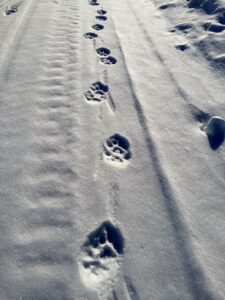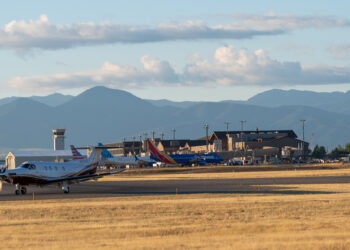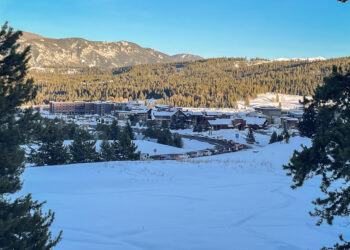Tracking Montana’s big cats
By Bryce Connery
EBS Contributor
The distant music of the dogs disappeared into the frigid air as they dropped into the next drainage. Judging by the size of the mountain lion track and its upward trajectory, it was going to be a long day.
To see a mountain lion in the Montana wild without a trained pack of dogs is a rare, often fleeting experience. This solitary and primarily nocturnal animal leaves its mother around two years of age, and can travel amazing distances to establish its home range.
While dependent upon prey density, it is not uncommon for a mature mountain lion to have a home range of more than 150 square miles. This past fall, a lion traveled 450 miles from British Columbia to the Big Belt Mountains of Montana, according to Montana Fish, Wildlife and Parks.
Mountain lions can sprint 40 mph and pounce over 20 feet from a standstill. They are one of the most deadly and efficient hunters in North America. Using the terrain and vegetation to their advantage, lions are typically ambush predators – they wait until the right moment before delivering a lethal bite to the base of their prey’s neck.
As snow deepens during the winter months, mountain lions will follow deer and elk into lower elevations. Successfully tracking these cats over great distances in the mountains requires a strong relationship between you and your hounds.

Similar to a springer spaniel working a brushy fence line or a lab diving into icy waters after a fallen mallard duck, a successful hunt depends on the dogs’ performance. A highly trained pack of hounds, bred specifically for the job, is the only effective way to consistently observe the elusive mountain lion. While one dog can effectively tree a mountain lion, most houndsmen have two or more dogs and common breeds include blue tick, treeing walker and black and tan.
Because lions travel such great distances, the dogs are fit with electronic GPS collars that give their location every few seconds. This technology allows monitoring of the chase as it unfolds miles ahead of the hunter.
The collars also provide a level of safety for the dogs that charge well ahead, noses down. They are bred for the task at hand and live for the chase. For most hounds, their success is expressed through both their vocal excitement and speed.
The track left behind in the snow can suggest a lot about the lion’s behavior, but there is constant uncertainty. Many areas of Montana are roadless, and without being able to circle-in the lion track there is no absolute way of telling how far the lion has traveled.
The dogs could pursue the track 100 yards down into a creek bottom and tree the animal, but more often will leave you miles from where you started.
Following the barks over the mountains as the dogs follow the track is truly exhilarating and physically challenging. Once you release the hounds, there is a level of physical commitment to stay on the track until the dogs tree the lion.
Mountain lions will take you to places you never knew existed and you otherwise would never hike to, often leading you through the most unforgiving terrain imaginable.
The short, choppy barking can only mean the dogs have the mountain lion treed, and it’s an amazing sound to hear after miles of hiking. To watch the dogs’ excitement at the base of the tree and observe Montana’s most elusive animal, often just several feet above you, is a truly wild experience.
While hunting is used to manage mountain lion populations, for most houndsmen the joy of watching their dogs hunt and leaving with a few photos to remember the day and the lion is more than enough. Knowing the large cat is still roaming the mountains with the hope of someday crossing its path again is what the sport is all about.
If you ever get the chance to follow the sound of hounds hunting through the mountains, it will be something you will never forget.
Bryce Connery is a realtor for Big Sky’s L&K Real Estate. He grew up in New Hampshire and is an avid outdoorsman who has been exploring the mountains and rivers in the Big Sky area for more than 10 years, often with his two hounds.












